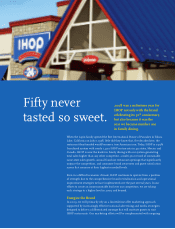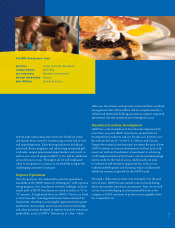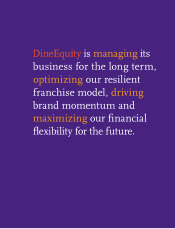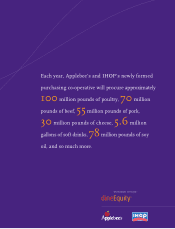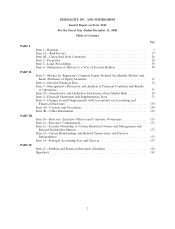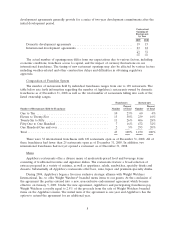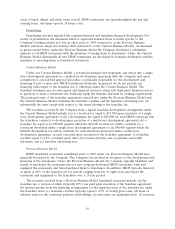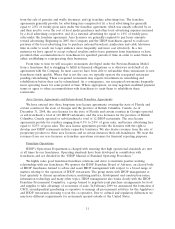IHOP 2008 Annual Report Download - page 18
Download and view the complete annual report
Please find page 18 of the 2008 IHOP annual report below. You can navigate through the pages in the report by either clicking on the pages listed below, or by using the keyword search tool below to find specific information within the annual report.to Applebee’s intellectual property. Franchise operations expenses include pre-opening training
expenses and other franchise-related costs.
The company restaurant operations segment consists of company-operated restaurants in the
United States and China. Company restaurant sales are retail sales at company-operated restaurants.
Company restaurant expenses are operating expenses at company-operated restaurants and include
food, beverage (alcoholic and non-alcoholic), labor, benefits, utilities, rent and other restaurant
operating costs.
Rental operations activities are not currently a significant part of Applebee’s business. Financing
operations activities are not currently a part of Applebee’s business.
IHOP
The franchise operations segment consists of restaurants operated by IHOP franchisees and area
licensees in the United States and two countries outside of the U.S.—Canada and Mexico. Franchise
operations revenue consists primarily of franchise royalty revenues, sales of proprietary products,
franchise advertising fees and the portion of the franchise fees allocated to IHOP intellectual property.
Franchise operations expenses include advertising expense, the cost of proprietary products and
pre-opening training expenses and other franchise-related costs.
The company restaurant operations segment consists of company-operated restaurants in the
United States. In addition, from time to time, restaurants that are reacquired from franchisees are
operated by IHOP on a temporary basis. Company restaurant sales are retail sales at company-
operated restaurants. Company restaurant expenses are operating expenses at company-operated
restaurants and include food, beverage (non-alcoholic), labor, benefits, utilities, rent and other
restaurant operating costs.
Rental operations revenue includes revenue from operating leases and interest income from direct
financing leases. Rental operations expenses are costs of operating leases and interest expense on
capital leases on franchisee-operated restaurants. Currently, the rental operations segment is
substantially generated by IHOP.
Financing operations revenue consists of the portion of franchise fees not allocated to IHOP
intellectual property, sales of equipment, as well as interest income from the financing of franchise fees
and equipment leases. Financing expenses are primarily the cost of restaurant equipment.
Restaurant Concepts
Applebee’s
We develop, franchise and operate restaurants in the bar and grill segment of the casual dining
category of the restaurant industry under the name ‘‘Applebee’s Neighborhood Grill & Bar.’’ With
2,004 system-wide restaurants as of December 31, 2008, Applebee’s Neighborhood Grill & Bar is one
of the largest casual dining concepts in the world, in terms of number of restaurants and market share.
As of December 31, 2008, franchisees operated 1,598 of these restaurants and 406 restaurants were
company-operated. The restaurants were located in 49 states, 16 countries outside of the United States
and one U.S. territory.
Each Applebee’s restaurant is designed as an attractive, friendly, neighborhood establishment
featuring moderately-priced high quality food, alcoholic and non-alcoholic beverage items, table service
and a comfortable atmosphere. Applebee’s restaurants appeal to a wide range of customers including
young adults, senior citizens and families with children.
4


